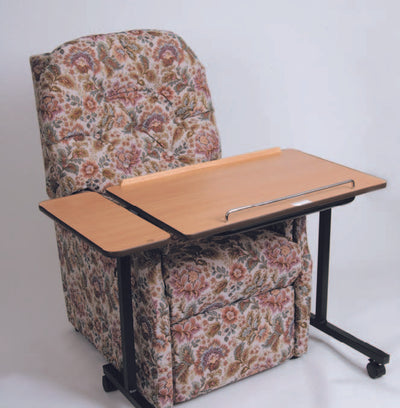Exercise, whether it’s gentle walking, swimming, golf or tennis, is essential to our everyday lives, so it’s inevitable that on occasion we might pick up a strain, ache or something more serious.
So, what’s the best way to recover quickly and get back to doing your favourite activity as soon and as safely as possible?
Act Quickly
In the early stages of an injury it’s hugely beneficial to act quickly to reduce any inflammation or swelling that may occur soon after the initial pain. The most common sports or activity-induced injuries result in a sprain or strain of a joint or ligament - for example in the knee, ankle, wrist or elbow.
P.R.I.C.E
As soon as possible after you feel the pain a good rule of thumb to follow is the P.R.I.C.E rule:
- P - Protect you joint from further injury
- R - Rest the joint for up to 72 hours. You might want to use crutches if it’s a foot or ankle injury or use an arm sling for a wrist/elbow to keep the weight off the affected area.
- I - Ice should be applied using an ice pack as soon as possible after injury, for 15-20 minutes every two or three hours (during daytime) for the first 2-3 days. Do not put ice directly next to skin, as it may cause ice burn. Gently press the ice pack on to the injured part. The cold is thought to reduce blood flow to the damaged ligament. This may limit pain, inflammation and bruising. Do not leave ice on while asleep.
- C - Compression with a bandage will limit swelling, and help to rest the joint or muscle. A tubular compression bandage or an elastic bandage can be used on a limb. The bandage should not be too tight - mild pressure that is not uncomfortable and does not stop blood flow is the aim. Remove the bandage before going to sleep. You will usually be advised to remove the bandage for good after 48 hours.
- E - Elevate the joint to avoid further swelling and pain. You might want to keep your sore leg up on a chair to at least hip level when you are sitting. Or if it is your arm, use an arm sling for a day or two.
Take a break
Any serious activity-induced injury can have a big impact on your life - especially if it affects your mobility and ability to perform other everyday tasks. It can be hugely frustrating to pick up an injury as it will almost certainly interfere with your regular routine, or perhaps a training schedule you’d like to stick to in order to achieve a personal goal or challenge.
However, no matter how disheartening it may be, it is really important to take some time to fully establish what damage may have been done and begin to plan a programme to gradually rebuild your strength to get back to the exercise you enjoy doing.
Rest and relaxation are so important in terms of recovery. Your body will need as much rest as possible to be able to go into repair mode and get you back to regular activity as soon as possible. So be kind to yourself.
Keep moving
It might seem counterintuitive to rest AND keep moving, but keeping mobile and active (within reason) is an integral part of recovery after injury. Keeping the blood flowing around your body will help to repair damaged tissues quicker. It will also help to improve your mental health, by encouraging those happy endorphins brought on by exercise to flow around your body and keep your mood buoyant while you’re resting from your usual exercise activities.
Your GP or physiotherapist can suggest exercises that will be suitable for recovery from your specific injury.
When to see a Doctor
If you’ve sprained or strained a joint and you’re worried that it’s more severe to treat at home you should seek advice from your GP or medic if there is:
- A worsening of symptoms - pain, swelling, bruising.
- Lack of movement after treating with P.R.I.C.E at home.
- You suspect you have broken a bone
- Your joint looks out of shape or dislocated
Need more help? We're always here to help so get in touch today.
For all your Medical and Homecare supplies give us a call at Mediworld.
We have over 40 years experience in medical, surgical, mobility and home health supplies and we're always on hand to chat if you need support or advice. Follow us on Twitter and Facebook and don't forget to read our other great health blogs!





































